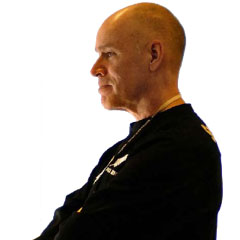Agile
How Do I Build an Agile Organization Part 2
Tuesday, April 5, 2016

|
Ken Schwaber |
How can I find qualified Scrum help?
“The Professional Scrum Master® (PSM® I) Certification (learn more here) from Scrum.Org is one of the most valuable agile certifications in the market. The greater the depth and extent of knowledge needed to earn a certificate, the greater its value. By this measure, the PSM assessments are significantly more valuable than available alternative assessments for Scrum. Microsoft® uses the PSM I assessment to validate knowledge as part of its Silver and Gold Application Lifecycle Management (ALM) competencies. ”
In 2009 I started Scrum.org and began my quest for reliable, trustworthy, meaningful certification. The goal was:
- The VP in my prior article (and any hiring entity) could rely on the certification when hiring a Scrum professional.
- Software professionals could use the certification to demonstrate their knowledge of developing software with Scrum.
- Organizations could determine which person to hire to coach or teach Scrum for software development.
- Anyone could determine the effectiveness of training (formal or informal) based on the scores of the assessments taken by people and what additional training may be required…
I was starting at the bottom, only knowing what I wanted, but not how to best get there. To achieve my goals, I used the Scrum approach of inspect and adapt. Starting small, failing and succeeding, and moving to achieve the above goals.
I started by researching what certification meant. There are many definitions with many dimensions. I liked this simple definition:
“Certification confirms a person’s knowledge of an accepted body of knowledge through one or more assessments. Assessments must meet specific standards of quality.
What Is Scrum?
My first step was to create a body of knowledge of Scrum. This would be the bedrock for proving competence and knowledge. It had to be widely accepted and evolve with time.
Without this body of knowledge, what would be the basis of the questions?
I had already created a Scrum Guide. In 42 pages it laid out what Scrum was and how to use it. I asked the community for comments; I got an earful. Mostly people thought it either wasn’t thorough enough, or they disagreed with the practices employed for decomposing Product Backlog, etc. They wanted me to add or change how to use Scrum to build software to fit their needs. For instance:
- What would a Product Backlog look like if the products consisted of hardware and software?
- What should the Scrum Master do if the Product Owner was negligent?
- What happened when the deadline was sooner than the team’s velocity?
- What was velocity?
- How did one calculate a reliable velocity based on “story points”?
People argued about how Scrum should be used, but very rarely about Scrum itself. I reviewed the 42-page guide and removed all practices and all instruction on how to use Scrum to develop software.
I returned to just the framework, Scrum’s essence: events, artifacts, and roles. The best usage was up to the user, to determine from training courses, experience, failures and success, books, and the industry in general. The framework Scrum Guide only required 17 pages.
With tremendous community input and work, the Scrum Guide emerged in 2009 and has since evolved. Jeff Sutherland and myself now manage the Guide. Scrum.org, Scrum Inc., and the Scrum Alliance have announced it as the basis of their Scrum services and products.
Over thirty translations are available. A User Voice provides mechanisms for suggestions and criticisms. We launched everything at a neutral website, so it was beholden to no commercial interests.
The VP of development in my first article had every right to expect that any candidates knew what was in the Scrum Guide.
Inclusion Instead of Exclusion
With the Scrum Guide in place, I was ready to create assessments. The questions would be based on the information in the Scrum Guide.
The person’s performance in answering those questions would be an objective, impartial determination of whether they would be certified (or not).
I had some ideas about what an assessment should be, but what did I know? To find out, I started small with a free set of assessments. I developed “Scrum Open” assessments for all three Scrum roles. In doing so, I found out that building assessments was a lot of work, and rework.
These open assessments were basic sets of questions grounded in the Scrum Guide. The assessment was free, available to anyone anywhere, to encourage people to take it. Wow! To date, over 600,000 people have taken the Open assessments. People want to test their knowledge.
I then built an organization to develop further assessments. I wanted assessments for each of the Scrum roles, Scrum Master, Team, and Product Owner. I wanted more advanced assessments of people’s skill in using Scrum to develop software.
All assessments and questions in the assessments had to meet certain standards:
- Wording of questions was straightforward, with no tricks, understandable by people when English wasn’t their primary language.
- Assessment had a time-box. At the end of the allotted time, the test ended.
- People couldn’t go back to previously answered questions.
- Each assessment was backed by a large pool of questions, enabling frequent rotation of the questions in any single assessment.
- The order of answers was juggled every time a question was presented.
- After the assessment, people received feedback on subjects areas with which they had difficulty.
- Questions and assessments were updated as the Scrum Guide changed.
People had to achieve a minimum score of 85% to be certified.
It took five years, the use of sophisticated software, and a lot of analysis, collaboration, community involvement, and rework to accomplish the above standards.
You can take the Scrum Open Assessments which remain free here or learn more about the Scrum.org certification assessments.
You can learn more in the upcoming Part 3 of this article series, where I describe the certifications and how people learned to pass the assessments and achieve certification.
Read more: http://appdevelopermagazine.com/partner/link/?ref=
This content is made possible by a guest author, or sponsor; it is not written by and does not necessarily reflect the views of App Developer Magazine's editorial staff.

Become a subscriber of App Developer Magazine for just $5.99 a month and take advantage of all these perks.
MEMBERS GET ACCESS TO
- - Exclusive content from leaders in the industry
- - Q&A articles from industry leaders
- - Tips and tricks from the most successful developers weekly
- - Monthly issues, including all 90+ back-issues since 2012
- - Event discounts and early-bird signups
- - Gain insight from top achievers in the app store
- - Learn what tools to use, what SDK's to use, and more
Subscribe here









